In the car audio world, terms like subwoofer box rise and power compression are relatively familiar to those who push their sound systems to the limit. So, after extensive research (three minutes) and a detailed planning session (another two minutes), we decided that it would be worth doing an experiment to explain and quantify these elements.
Let’s Talk About Speaker and Subwoofer Efficiency
If you’ve read the technical articles on BestCarAudio.com, you know that speakers of all shapes and sizes are notoriously inefficient. At the highest levels, maybe 2% of the power coming from your amplifier is converted into sound. The rest of that power is wasted as heat. For a high-performance 6.5-inch midrange/midbass speaker, efficiency is around 0.33%. For a 12-inch subwoofer of the same caliber, 0.27% isn’t abnormal. Enthusiasts often misunderstand that a massive subwoofer with a heavy cone, stiff suspension and a large-diameter four-layer voice coil is often less efficient. Efficiency numbers of 0.15% or less are common for some of these big, beastly subs.
Where we see the best efficiency specifications from speakers are in those designed for concerts. The so-called Pro Sound drivers trade low-frequency output capabilities for increased output at higher frequencies. Most 6.5-inch woofers are designed to play down to 75 or 80 Hz without issue in car audio systems. However, drivers designed for concerts typically have 50% to 25% of the cone excursion capability and a higher resonant frequency, so they can only play down to 150 to 200 Hz. The trade-off is an increase in output of 6 dB or more with the same amount of power. Using speakers like this in a car audio system can be tricky as you’ll still need a driver to cover the midbass range from 80 to 200 Hz.
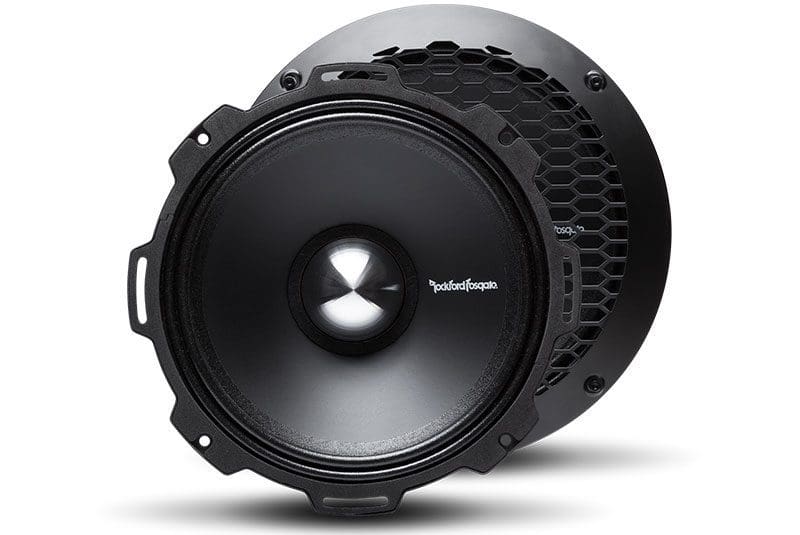
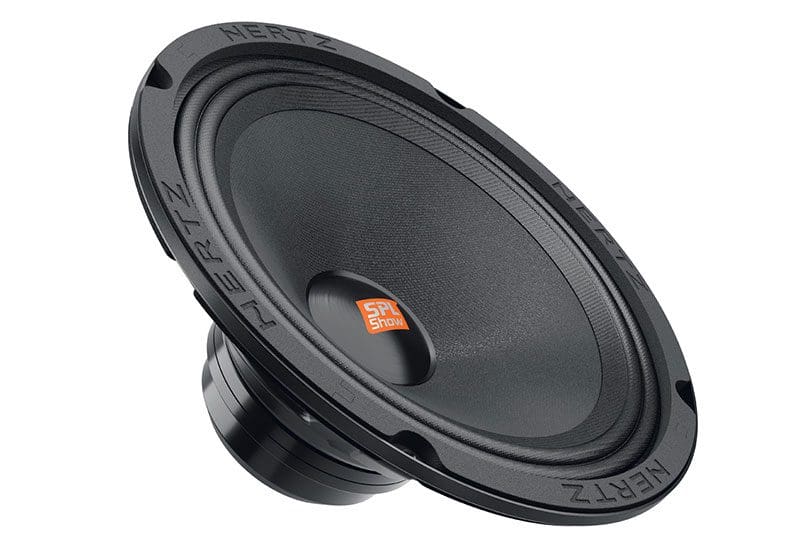
Resistance Is Futile
Every electronic component or piece of wire has some amount of resistance. These resistances can be very small, measuring in the decimal milli-ohm range for a yard of power wire. For example, the voice coil on a speaker or subwoofer might be wound from wire as large as 18 gauge. For tweeters, the wire can be as small as 46 gauge.
The speaker’s impedance is determined by the size of the wire, the material it’s made from (copper, aluminum or copper-clad aluminum) and the length of the wire. To reach a target impedance of 4 ohms or similar, the engineer designing the coil assembly balances these characteristics along with the target mass for the completed assembly.
Let’s consider one last concept before we get into our discussion about power compression and box rise. As any conductor heats up, resistance increases. Pure copper has a temperature coefficient of +0.393% per degree Celsius. If a piece of wire measures 4 ohms at room temperature (20C/68F), it increases to 4.0393 ohms if the temperature rises 30C/86F. Aluminum has a temperature coefficient of +0.4309% per degree Celsius.
If 2 volts of signal is applied to a 4-ohm speaker, the amplifier delivers 2 watts of power. If the impedance of that speaker increases, the current from the amplifier decreases. If the impedance increases to 4.039 ohms because the coil is now at 30 degrees, the power dissipated in the speaker drops to 0.9903 watts with the same 2 volts applied.
Let’s Look at Power Compression
If you followed the math in the previous paragraph, you’ll quickly realize that heat is the enemy of a speaker. As the voice coil heats up, its resistance increases. As the resistance increases, the power the amplifier delivers to the speaker decreases. To maintain the same output level, you need to increase the power from the amp. The additional energy required to achieve the same output level results in more heat being generated in the voice coil. If you are good at recognizing patterns, you’ll already notice that we are in an endless loop that can quickly approach the thermal limits of the speaker.
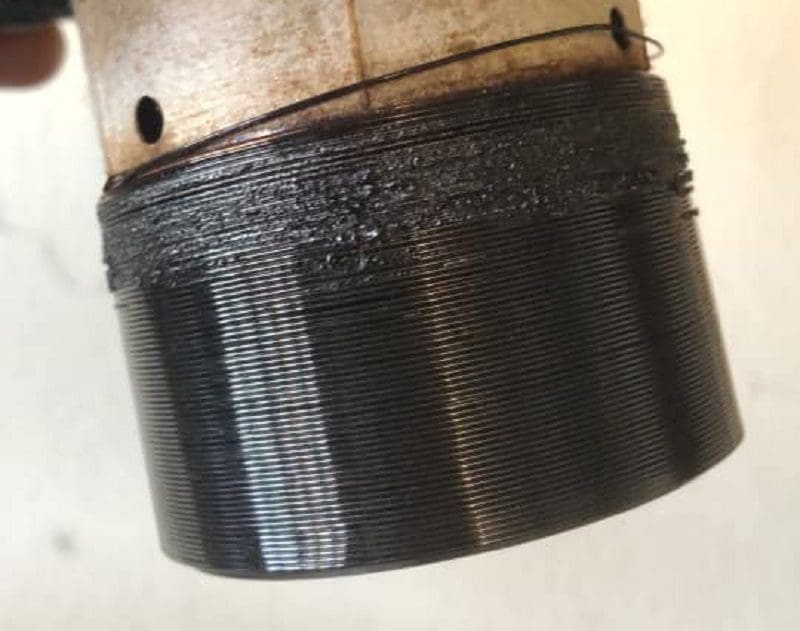
Let’s Measure It!
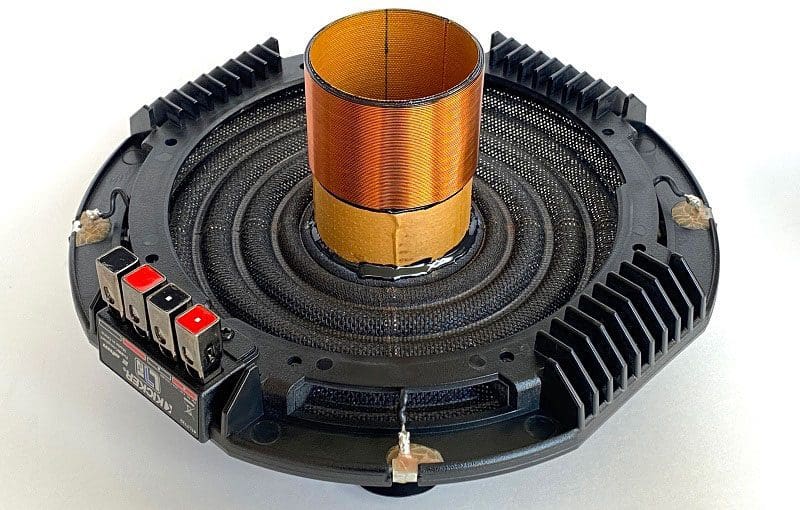
We borrowed a Kicker L7 cone and spider assembly from Lee Mattason at Burlington Radioactive. First, we’ll use our Smith and Larson Woofer Tester 2 to measure the coil’s impedance. Then, we’ll start heating the coil assembly and take additional impedance measurements to see how the impedance changes.
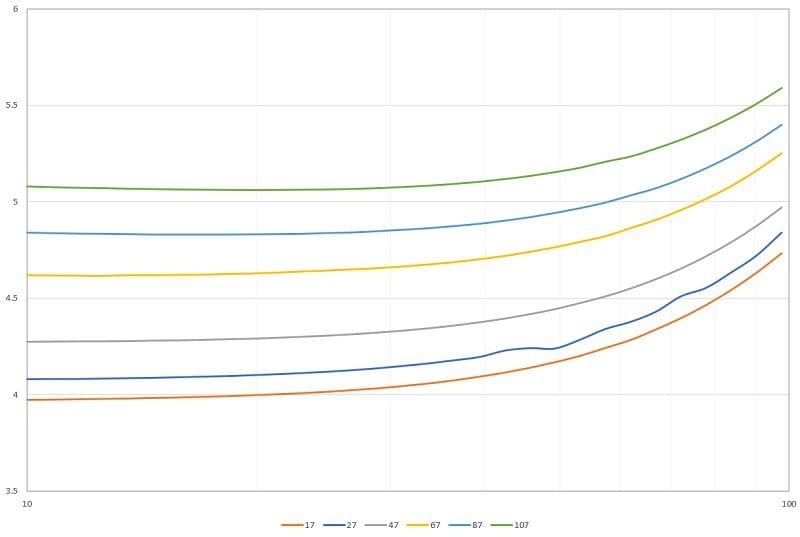
The chart above shows the impedance of the voice coils of the Kicker L7 sub wired in series at different temperature points. At room temperature (17 degrees Celsius), the coil had an impedance of 3.975 ohms at 10 Hz. With the temperature of the coil at 107 degrees, the impedance had increased to 5.08 ohms. As a note, we could smell a faint whiff of the voice coil adhesive with the temperature at 120 degrees, so we didn’t increase it further. This sample needs to go back to the store and be put on display for consumers to see. Damaging it is not an option.
Let’s say we have a subwoofer amplifier rated to deliver the full 900 watts that this sub is rated for. When that amp produces that 900 watts into the 3.975-ohm load, it will be delivering 59.81 volts to the coil. It only takes a second or two for the coil to heat up well past our arbitrarily-chosen 107-degree mark at that power level.
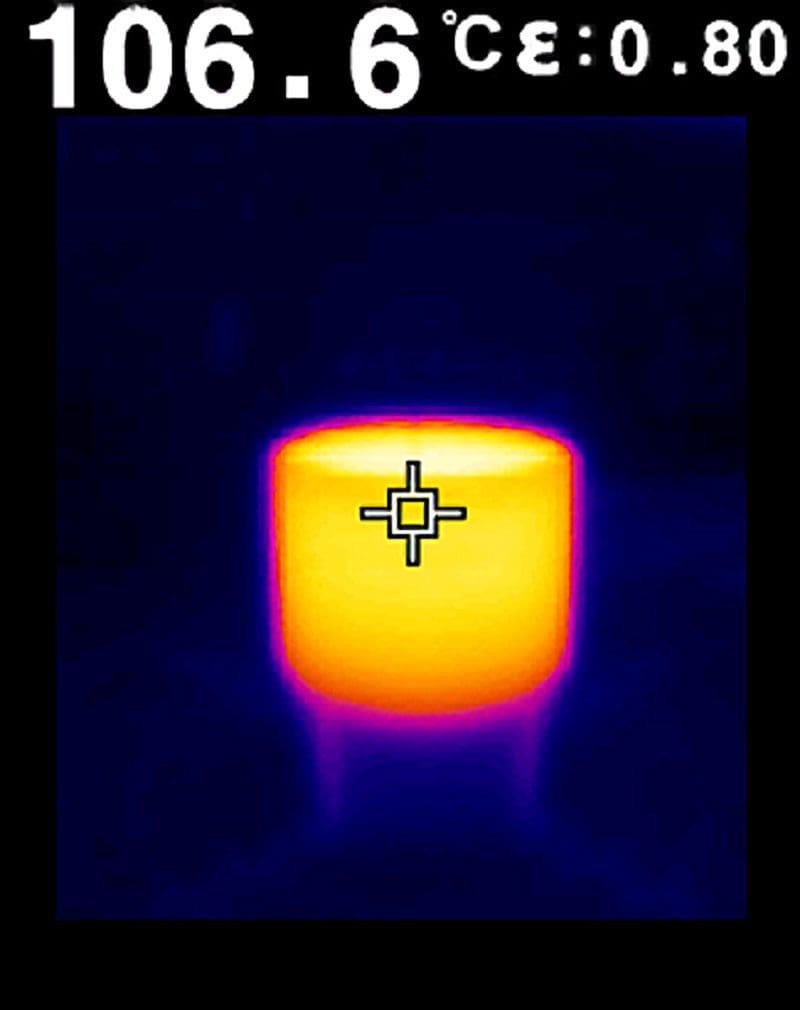
We can now recalculate the power going to the sub with the voice coils at 107 degrees with 59.81 volts from the amplifier and the new impedance of 5.08 ohms. That works out to 704.18 watts. The sub’s output should decrease by 1.07 dB based on simple math, assuming the cone assembly was operating linearly. If you need the same level of output that was provided by 900 watts when the speaker was cold, you now need an amplifier capable of producing 1,151 watts. Then, the sub will get much hotter, much faster, and the impedance will increase even more.
Every single speaker on the planet behaves the same. The voice coil impedance increases as temperature increases. It doesn’t matter the brand, the size of the speaker or its design. Thankfully, small speakers like tweeters rarely see much more than a watt or two of power, so their fragile, tiny voice coils don’t heat up quickly.
A Good Reason to Choose High-Power Speakers
If you’re shopping for speakers for your car, truck, boat or SUV and plan to play them loudly, then choosing a solution with good power handling capabilities becomes as crucial as the sound quality of those speakers. On the other hand, if you are basshead to who competes in SPL competitions and you want to get the most power from your amplifiers so that your system can achieve the highest sound level numbers, then do everything you can to keep the subwoofers cool before your run. In either case, your local specialty mobile enhancement retailer can help you choose speakers, amplifiers and subwoofers that will deliver impressive performance and excellent reliability.
This article is written and produced by the team at www.BestCarAudio.com. Reproduction or use of any kind is prohibited without the express written permission of 1sixty8 media.
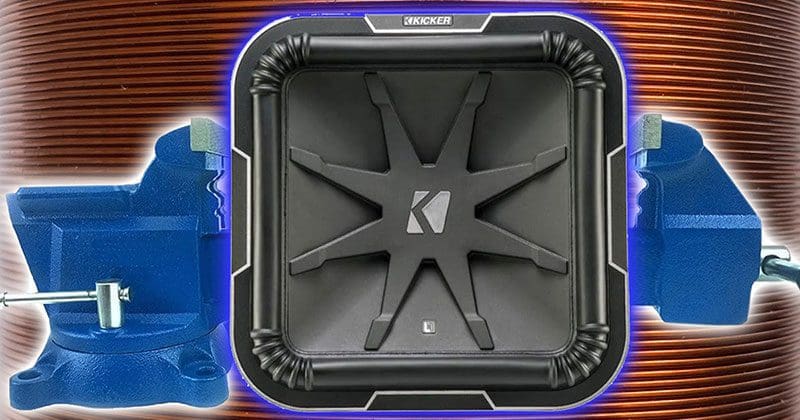

Leave a Reply